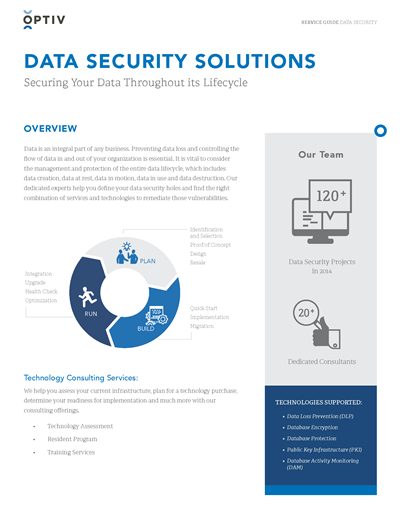Understanding the Role of Data Destruction in Fortifying Cyber Security Defenses
Understanding the Role of Data Destruction in Fortifying Cyber Security Defenses
Blog Article
How Proper Information Damage Adds To Robust Computer System Protection Solutions and Mitigates Dangers of Information Breaches
In today's electronic landscape, the significance of appropriate data destruction can not be overstated, as it functions as a basic element of thorough computer safety and security services. By implementing efficient information erasure methods, companies not just protect sensitive info from unapproved gain access to but additionally reinforce their conformity with governing frameworks - data destruction. Nonetheless, the implications of poor information destruction extend past plain conformity; they can exceptionally affect an organization's cybersecurity position and credibility. Comprehending these measurements elevates critical inquiries about the methods in area and their efficiency in an era of escalating cyber risks.
Value of Data Damage
In today's digital landscape, the relevance of data damage can not be overstated. As companies increasingly depend on digital properties, the potential threats related to information breaches and unauthorized access magnify. Efficient information destruction is a vital component of a comprehensive details safety strategy, securing delicate details from falling under the hands of destructive actors.
When data is no more required, just deleting files or formatting disk drives wants. Recurring data can typically be recovered using readily available devices, posing significant dangers to both individuals and organizations. This underscores the need for durable data damage practices that make sure all data is irretrievably erased.
In addition, regulatory compliance mandates, such as GDPR and HIPAA, highlight the obligation to protect sensitive data, including its proper disposal. Non-compliance can lead to serious lawful effects and punitive damages. data destruction. Therefore, incorporating effective data devastation protocols not only boosts protection yet likewise strengthens an organization's reputation and credibility

Techniques of Secure Information Erasure
A number of efficient methods of secure information erasure can be used to ensure that sensitive information is permanently gotten rid of from storage space gadgets. One commonly acknowledged strategy is information overwriting, which involves changing existing information with random patterns numerous times. This method significantly reduces the possibilities of information recovery, although it may not be effective against innovative forensic strategies.

Physical destruction is also a dependable method, where storage space gadgets are provided unusable via shredding, squashing, or incineration. This approach guarantees that data can not be recuperated by any type of methods yet calls for careful handling of harmful materials.
Finally, specialized software program devices developed for protected information erasure provide performances that adhere to various erasure standards. These tools often include attributes like verification processes to verify successful information damage.
Using these approaches in combination can enhance information protection and mitigate the threats related to information breaches, making sure that delicate details is not unintentionally exposed.
Legal and Compliance Considerations
The methods utilized for secure data erasure not only serve to secure sensitive information yet additionally must straighten with legal and compliance frameworks controling data protection. Organizations are needed to abide by numerous laws, such as the General Information Security Guideline (GDPR), the Health Insurance Coverage Mobility and Liability Act (HIPAA), and the Repayment Card Industry Information Safety And Security Standard (PCI DSS) These regulations mandate certain procedures for data dealing with and destruction, ensuring that sensitive and personal data is irretrievably erased when no more needed.
Failure to adhere to these legal needs can result in considerable penalties, consisting of fines and reputational damage. Furthermore, companies must preserve records of data devastation processes, showing compliance throughout audits or investigations. This paperwork not only shields against lawful consequences yet also enhances trust with consumers and stakeholders, showcasing a dedication to data safety and security.
Integrating lawful and compliance factors to consider right into information devastation practices is crucial for any type of organization. It decreases the danger of information violations and highlights an aggressive strategy to securing delicate details, ultimately promoting a culture of safety and security and responsibility throughout the organization.
Effect On Cybersecurity Stance
Reliable information destruction considerably boosts an organization's cybersecurity stance by decreasing the potential attack surface area for cyber risks. When sensitive information is not appropriately damaged, it continues to be easily accessible to destructive stars who can exploit this details for unapproved gain access to, identity theft, or corporate espionage. By implementing durable information devastation protocols, companies click to investigate can successfully lessen the danger of data violations and boost their total safety framework.
Additionally, the safe disposal of outdated or unneeded information not just safeguards sensitive information but likewise aids organizations adhere to industry regulations and criteria. Failing go to the website to appropriately ruin data can lead to severe legal effects and reputational damages, more jeopardizing an organization's cybersecurity stance.
/prod01/channel_3/media/tcd/itservices/images/Untitled-design-(26).png)
Ultimately, focusing on reliable data devastation is necessary for fostering a robust cybersecurity position, guaranteeing that organizations remain attentive against progressing cyber dangers while shielding their essential properties and stakeholders.
Finest Practices for Organizations
Carrying out finest practices for information devastation is essential for companies aiming to protect delicate details and reduce cybersecurity threats. Most importantly, companies ought to establish a detailed information devastation policy that outlines procedures and duties. This policy must adhere to pertinent regulations, such as GDPR or HIPAA, ensuring legal conformity.
Secondly, it is vital to utilize authorized information sanitization methods, consisting of information cleaning, degaussing, and physical damage, customized to the kind of data and storage space anonymous tool. Employing licensed professionals for data destruction services boosts the dependability of these techniques.
Additionally, organizations must maintain a detailed supply of all data storage devices, ensuring that all out-of-date or replaced tools goes through damage. Routine audits of data destruction methods can aid enhance and identify weak points compliance.
Worker training is one more critical facet, as personnel has to recognize the value of information destruction and stick to developed methods. Companies should document all information damage activities to give responsibility and traceability, which can be vital throughout audits or in the event of a breach.
Verdict

One widely identified method is information overwriting, which entails replacing existing information with random patterns multiple times.The techniques utilized for safe and secure information erasure not just offer to safeguard sensitive information but likewise has to straighten with legal and compliance frameworks controling information protection. These policies mandate specific protocols for information handling and devastation, making sure that individual and delicate information is irretrievably erased when no longer needed.
By executing robust data devastation procedures, organizations can efficiently lessen the danger of data breaches and enhance their total safety framework.
In final thought, appropriate data destruction is important for enhancing computer system safety services and mitigating the threats connected with data violations. - data destruction
Report this page